2024HIR哈佛国际评论
春季赛报名倒计时!
报名截至时间:4月25日
大家准备的怎么样啦?
本赛季推出主题二选一
自由度再次提升!

为了帮助同学们更好地理解新赛题、备战HIR,此次邀请了资深导师E老师帮大家梳理了赛事要点,助大家快速打开写作思路!

本篇着重解读
Theme A:Inequalities in a VUCA World
出现两个主题啦,可以选择其一作答,提交的时候也记得看清楚选项哦!
《哈佛国际评论》学术写作挑战
感兴趣的同学快来报名参与吧~
【翰林提供报名指导服务】扫码咨询!
Theme A -主题解析
Our current world is shaped by an acronym called “VUCA”—Volatility, Uncertainty, Complexity, and Ambiguity—these broader themes exacerbate, contextualize, and underpin a broad array of inequalities. Globally, gross inequalities shape thedistribution of resources, including military might, education, wealth, capital, and natural resources. These inequalities persist on different political strata, dividing regions of the world (Global North vs. Global South), countries, or different cities/towns in a particular country.They may also divide people based on personal demographics: gender, race, ethnicity, religion, socioeconomic class, caste, sexual orientation,etc.
当今世界,可以用一个缩写词“VUCA”来定义,意味着不稳定性、不确定性、复杂性和模糊性。也正是基于这些特性,反过来进一步加剧了各种不平等现象,使得我们所处的当下,各类不平等问题变得更加突出和复杂。
全球范围的不平等造成了资源分配不均,包括军事力量、教育、财富、资本和自然资源。这些不平等存在于各个层面,并将世界依据地域、国家、城市等因素区分开来。
此外,也将人们基于性别、种族、民族、宗教信仰、社会阶层及取向等因素进行了划分。
关于VUCA World
这是题目中出现的第一个关键词,接下来带着大家一起解读这个特定名词“VUCA 世界”~
VUCA是一个缩写(包含了Volatility,Uncertainty,Complexity and Ambiguity),一开始源于一个军事概念,而现在,它已经变成了我们对当代的一个时代描述。
Volatility—不稳定性
Uncertainty—不确定性
Complexity—复杂性
Ambiguity—模糊性
概括来形容,就是我们处在当前的时代,有很多东西是同时在发生的,而它的因果又是交叉的,已经没有办法用一个单线的思考因果来认知和处理我们生活中发生的很多事情,或者接收我们得到的很多信息。
如果用生物学的反应链来举例,那么很多事务,并不是单一链条式的连锁反应,而是类似网状的,各事务之间有很多相互关联的部分。
关于VUCA的更多解释,小林从《哈佛商业评论》中为大家找到了相关的资讯,可以帮助大家进一步的理解和思考。
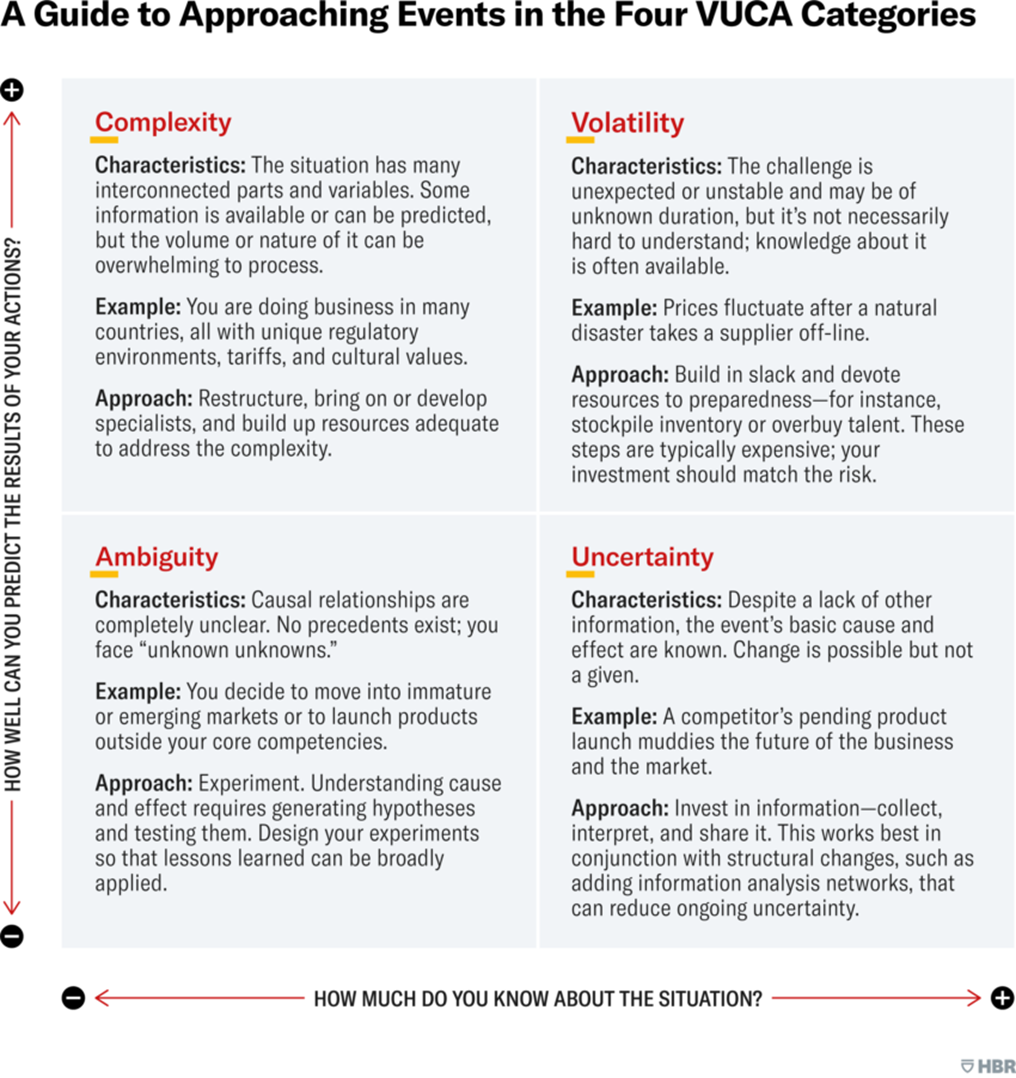
图源自Harvard Business Review
我们可以看到,把它放到一个数轴上,
横轴是How much do you know about the situation?也就是我们对于这个情况的掌握程度。
竖轴是How well can you predict the results of your actions?也就是我们能不能对自己的行为做出合理的推测。
横轴、纵轴相交错,就是我们可以综合讨论的内容。
关于Inequalities
这就是我们这个题目里的另一个关键词了。
Inequalities,也就是不平等,我们可以很容易就从中联想到disparities(差距)的概念。
比如资源分布、体系结构等等一些问题,它们有所区别,可能就会导致很多方面的不同。
而这种差异性达到一定的程度,就会变成一种明显的差距,甚至是出现了明显的不平等现象。
在上文所说到的这样一个复杂系统的世界里面,我们怎么去应对出现的一些Inequalities(不平等),就是我们可以思考讨论的部分了。
具体的思考的角度还是非常广泛的,举些例子:
从经济发展角度:我们可以想到,比如南北分歧,发达&发展中国家,大型企业&小型企业,大型经济体&小型经济体;
从地区的规划发展角度:我们可以想到,城市&农村;
从贫富差异角度:我们可以想到,富人&穷人,富裕&贫穷国家;
还有很多其他的角度:比如性别,种族等等。
从这些思路出发,我们能看到很多的不平等现象,这个不平等,可能是VUCA的一个起因,也有可能是VUCA的一个结果,也可能既是因又是果。我们首先需要找准我们的Anchor Point,然后再去展开。
所以Theme A这道题,在我们展开分析的时候,其实需要注重的就是两个关键点,一个是VUCA World,一个是Inequalities。在确立自己的论述主题后,针对这两点,我们需要进行清晰合理的阐述。
那么对于题目有了一些了解之后,该如何开题呢?我们接着往下看!
开题思路
可以试试看按照这样的一个逻辑方向去探索~
▪ 确定这些差异或者不平等是何时构成的?
▪ 究其原因,是什么造成的呢?
▪ 具体,是什么样的不平等?
▪ 它的前因后果是怎样的?
▪ 它在整个“关联网”中是处于哪一环?
▪ 它对于其他人、事、物的影响是怎样的?
综合这些问题,来看待这道题~
希望可以帮助大家打开思路,梳理开题逻辑~
备赛要点
关于HIR的备赛要点,E老师也根据丰富的带赛经验罗列了一些,希望大家可以有则改之,无则加勉~
ARGUMENT
在分析中,论点必须要是有质量的。
我们的文章不能够仅仅是总结、堆砌文献资料,必须是从中有所想所得,保证有自己的分析。
STEPS
一个完整的写作流程,可以帮助我们更顺畅地产出文章。
希望大家按照标准的写作流程来进行备赛,不要图方便而忽略某些步骤:
做好research 、写好outline 、再写paper
每一步走踏实了,才能够“顺理成章”,同时在此基础上,再加以深入分析,千万不要对任何的论据只是罗列出来,浅浅带过。
推荐阅读
我们从HIR官网选取了一些不同领域的范文,给大家进行参考,可以从中了解评审更看好的逻辑思路,从中学习好的方法论~
01The Future of the Sino-Venezuelan Relationship: Make or Break?
Finance & Economics
Law & Diplomacy
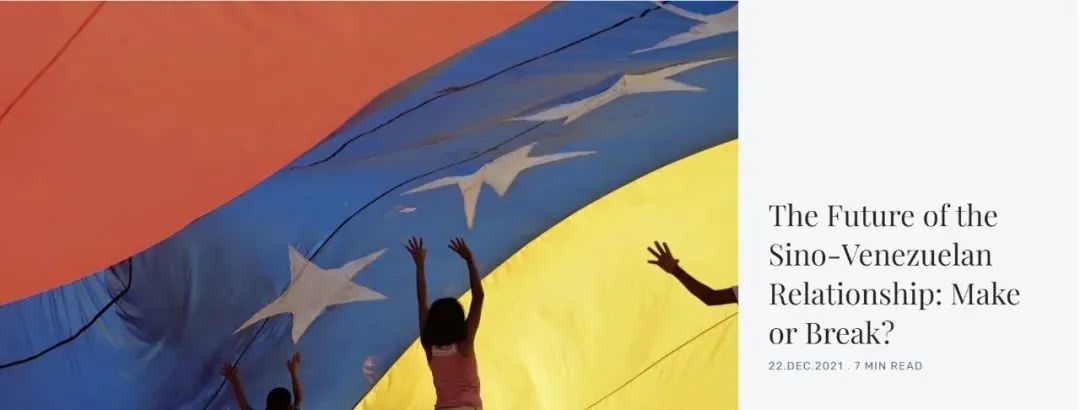
With the largest oil reserves in the world, Venezuela is a country that has undergone many changes since the 20th century. The nation went from being the wealthiest per capita country in South America during the OPEC oil embargo of 1973 to having a hyperinflation rate close to 10 million percent in 2019. Venezuela’s modern history revolves around their oil industry, dating back to the discovery of rich reserves in 1922. In just seven years, the country was producing 137 million barrels per year. At the time, it made them the second largest oil producer in the world.
Such large growth does not go unnoticed by global superpowers. Major nations have become involved in Venezuela as a result. One of these countries is China, the world's largest importer of oil. Venezuela's relationship with China grew with President Hugo Chavez’s rise to power in 1998. Throughout his presidency, the two countries worked together to establish mutually beneficial projects that helped the Latin American country in exchange for its abundant natural resources.
These projects have required a large amount of capital. Since 2007, China has invested around US$67 billion into Venezuela. Compared to the rest of Latin America, this is more than 40 percent of Chinese investment in the continent.
Graph displaying Chinese foreign investment in South America. “Top 5 Chinese Loan Recipients in Latin America and the Caribbean” by IAD China-Latin America Finance Database.
Apart from its oil supply, China saw Venezuela as an open market for engineering projects and arms deals. During the inception of the current Sino-Venezuelan relationship, Chinese companies would compete for large infrastructure projects, such as Latin America’s first high-speed railway. Most of these projects ceased with the downfall of the Venezuelan economy. However, China is still Venezuela’s second largest seller of arms.
Its location also makes it a prime spot for exerting influence over the continent. Its proximity to the United States means that China’s involvement symbolizes a concern for the North American superpower, which has historically sought to establish itself as a dominating foreign influence in Latin America through its many interventions during the Cold War years.
Although the relationship between China and Venezuela seemed to work successfully, many things changed with the death of President Chavez in 2013 and the collapse of oil prices in 2016. During this time, the country’s total output of oil decreased by 25 percent. The World Bank has placed Venezuela’s government effectiveness in the 2.4 percentile of countries while its corruption percentile is 3.85. Currently, 96 percent of the Venezuelan population lives under the poverty line. The high hopes China had for the Latin American country fell with the collapse of Venezuela’s economy. Recent studies predict that the country still owes China around US$20 billion.
Given the large risks that China is currently facing with Venezuela, different entities question China’s future plans with the country. There are different theories for why the Asian giant is still so heavily involved in the Latin American nation.
Shared Political Ideology
During Chavez’s presidency, many were quick to question if the new alliance between the two countries were based on shared political ideologies. Both governments have greatly authoritarian views that differ from most American countries. China claims that the partnership “did not have an ideological purpose, and was not designed to confront third parties nor to affect Venezuela's relations with any other country.” Meanwhile, Chavez would emphasize that Venezuela’s political relations with foreign nations were based on their negative relations with the United States. If it is the case that the relationship between the two countries is based on their political ideas, it would seem important for China to protect Venezuela from a collapse.
Future Plans with Venezuela
Another possible driver is China’s future geopolitical plans within the nation and the continent. When relationships with the Latin American country first began, China was still establishing its presence in the developing world. Venezuela was the start of China’s investments in the region, which grew from US$12 billion in 2000 to US$300 billion in 2019. Venezuela also supported China through various multilateral organizations. There has been a large exchange of services between the two countries, ranging from military training to communication satellites.
The dynamics of the relationship has changed since the early 2000s. Under authoritarian President Nicolas Maduro, the Venezuelan government is now seen by many countries as corrupt and inefficient. China’s alliance with the nation is hurting the reputation that it has strived to develop. China still plans to be a leader in the South American economy, given its large investment plans in the region. If China is to continue its relationship with Venezuela, they will have to do so without directly supporting the regime itself. This lack of support must be made public, which could have detrimental effects on the current contracts with Venezuela and the relationship between China and its allies. Due to these externalities, it seems unlikely that the Asian country will take such action. However, this approach could bring support from most Latin American countries in which China has investments, given that most of Latin America supports President Juan Guaido and the democratic resistance. Even with the current change in the relationship, state-owned Petroleos de Venezuela still has China as its second largest customer.
Stakes are Too High to Leave
There is reason to believe that China feels it is too involved with Venezuela. With its large outstanding loan, China could be focused more on getting its payments back than strengthening its diplomatic relations. When economic models for Venezuela changed in 2016, China cut off all its lines of credit with the nation. Venezuela’s drop in oil production and the drop in oil prices also make it harder for China to trust Venezuela with its payment. In response to the changing economic state of the Latin American country, the Asian giant has revealed existing communication channels with Venezuela’s opposition party to ensure debt payments. Ultimately, China has to decide if Venezuela’s debt is more valuable to them than their shared political philosophy.
Venezuelan crude oil production by year and World price of crude oil per year. “Venezuela: From Oil Boom to Bust” by the Federal Reserve Bank of St. Louis; U.S. Energy Information Administration.
Steps Forward
Despite China’s current goals in Venezuela, the Asian nation remains in a suboptimal position. While they have a strong incentive to help rebuild Venezuela’s economy in the form of repayments, doing so would not be a simple task. China would have to invest even more of its capital into the nation while also ensuring that corruption does not deplete the value of Chinese investments. Some estimates state that an investment of US$150 billion over the next 10 years will be necessary to get Venezuela back to past levels of oil production . Most of the capital will have to come from foreign investments. If China wants to ensure their payments, they would have to further help the Latin American country. This kind of initiative would increase tensions with the US, given the direct opposition that the US maintains to the current Venezuelan regime.
China could also aid the opposition in Venezuela if they promise to repay its loans. This carries precautions on its own, given that Chinese allies like Russia and Cuba have a substantial incentive to stay active in the region. These incentives come in the form of military deals with Venezuela. These countries would also not be able to be as involved in the region as they currently are if a new government takes over. If China were to support the opposition, it would negatively affect its relationship with current allies.
There would be great ideological tensions within China itself if it supported the democratic opposition, given the communist and authoritarian philosophy of its own government. Supporting a democratic government would be seen as largely hypocritical by the rest of the world. Even though China’s administration is greatly different from that of Venezuela, the shared basis in which their governments stand leaves China almost unable to support a democratic administration. If China were to support the Venezuelan resistance, it would not look good for the Asian country and what it stands for. China could try to make it clear that their sole interest is the debt, although they would have to do so very carefully.
China could also forgive its loan with Venezuela and move on with its geopolitical strategies. This approach would prevent further rising tensions with the US coming from involvement the South American country. The downside is the precedent that it sets. China is involved in risky investments with developing countries through their Belt and Road Initiative. If it allows one of its investments to default, it would make it easier for another country to do the same. This has the potential to disrupt their initiative, given that not all developing economies are able to pay their loans. This is part of the reason why investments in these regions are seen as high-risk. If China’s investments begin to default, the country will lose capital and its reputational power as leading the developing world. The Asian giant will have to decide if helping Venezuela is worth the potential sacrifice that it may bring to their political agenda.
Regardless of China’s decision, there will be consequences that will impact countries both directly and indirectly. It is important for the Asian giant to think of how they want the world to see them and what relationships they value most. Given its larger global strategies, China will also need to assess what it is willing to sacrifice in order to become the most influential power in the developing world.
链接:https://hir.harvard.edu/the-future-of-the-sino-venezuelan-relationship-make-or-break/
02Running Dry: The Battle for Water Security in Uruguay and Why It Foreshadows a Greater Issue
Energy & Environment
Development
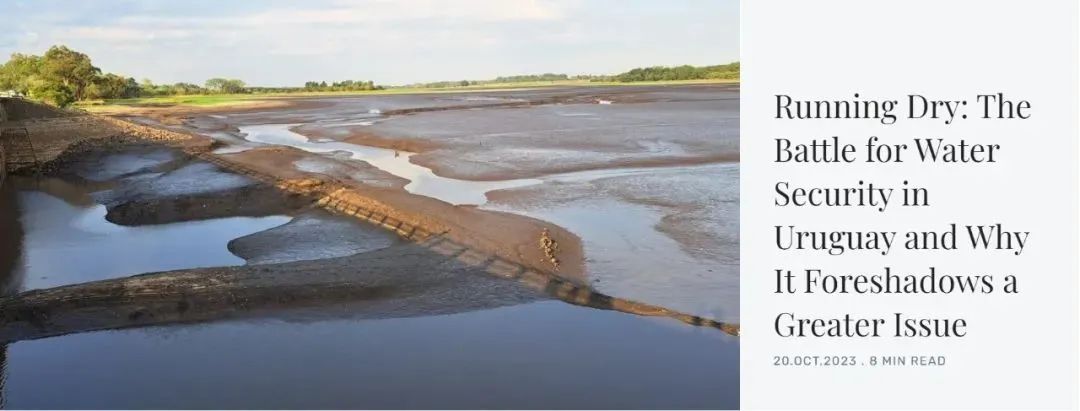
On June 22, Uruguay’s Archbishop, Daniel Sturla, tweeted: “Our God, we ask You to give us the necessary rain.” He was responding to the water crisis the South American nation has faced for the past three years, the worst in over half a century. While some thanked the Archbishop for his efforts, others pointed out that God is probably not very active on Twitter.
Home to just over 3.5 million people—less than the Greater Boston Area—Uruguay has been overshadowed by neighboring giants Argentina and Brazil for most of its history. However, it boasts one of the highest human development indices and GDP per capita in the region. In 2004, Uruguay also became the first country in the world to recognize access to drinking water as a constitutional right, a pledge it is currently struggling to uphold.
Since 2020, Uruguay has suffered a series of droughts that have led to billions in losses in the agricultural sector, the country’s biggest industry. Most alarmingly, the droughts have threatened access to safe drinking water for the capital of Montevideo’s Metropolitan Area, where 60 percent of the population—approximately 1.9 million people—live. Montevideo’s main water source, the Paso Severino Reservoir, currently holds nine percent of its normal capacity, a figure that reached an all-time low of 1.7 percent in early July. This drop prompted the Uruguayan government, led by center-right president Luis Lacalle Pou, to declare a water emergency on June 19.
Step 1: Add 440mg of Salt
In order to meet demand, the State Sanitary Works Administration (OSE), the body in charge of the country’s water supply, decided to gather water from sources closer to the River Plate. This solution, however, posed a new problem. The river’s proximity to the Atlantic causes it to have greater salinity, which spread to the entire network. The World Health Organization recommends that sodium levels in drinking water not go above 200 mg/L; in Montevideo, current values are twice that.
“Of course, lack of water is worse, but drinking saltwater for a prolonged period can have devastating cardiovascular consequences,” said cardiologist Álvaro Niggemeyer. The Health Ministry informed the public that, while the water is technically potable, pregnant women, infants, and people suffering from cardiovascular and other health issues should minimize their tap water intake and take additional precautions.
The rest of the population quickly followed suit. A poll from June found that six percent of Uruguayans continue to drink tap water, compared to over 66 percent last year. Conversely, bottled water sales have skyrocketed by 573 percent from 2022. Retailers were forced to implement purchase quantity restrictions, but scarcity prevails—in large part due to hoarding levels not seen since the beginning of the COVID-19 pandemic. “We receive over 200 bottles a day, and they don’t even last two hours on shelves,” one grocery store manager said. Suppliers nationwide have been working at maximum capacity, and the government is considering removing taxes from imported bottled water.
“We’re in a complex situation, one which unfortunately requires us to wait for it to rain. But rest assured that anything we can do to ease the crisis we will do,” said President Lacalle Pou.
It Wasn’t Always Like This
Having clean and abundant water has become ingrained in Uruguay’s national identity. Children are taught early about the country having one of the largest renewable water reserves per capita—five times the world average—and how Uruguay is (or was) the only South American nation with universal access to safe drinking water.
In normal years, Uruguay receives approximately 1300mm of rain, a value currently at 300mm. Montevideo was one of the first capital cities in Latin America to install piped water systems, yet it is now scrambling to find water to pump—but why?
A Historic Dry Spell
For three and a half years, Uruguay has faced its worst drought in 74 years, caused by the weather phenomenon of La Niña–which cools the Pacific Ocean’s surface and leads to dry periods–and further aggravated by increased temperatures.
Rainfall in Uruguay usually results from the movement of cold fronts in winter (June to August) and regular thunderstorms during summer (December to February). This year, however pleasant to beachgoers, the latter never came, with certain regions experiencing the hottest temperatures in over 40 years.
Many were quick to point the finger at climate change, which exacerbated the issue but was not the sole culprit. The World Weather Attribution, a group of independent scientists studying the impacts of climate change on extreme weather events, concluded in a February report that “reduced rainfall is within the natural variability,” but the “consequences of drought are becoming more severe due to the strong increase in extreme heat.” In any given year, La Niña has a five percent chance of developing, yet 2023 marks the third consecutive period it has formed—an anomaly which experts agree is in large part due to global warming. Therefore, although the dry spell falls within expected climatic variations, extreme weather conditions have enabled it to have more drastic effects. In addition to Uruguay, neighboring Argentina and Brazil have been facing similar issues.
The situation is predicted to improve in the spring (September to December) once the El Niño phenomenon reaches the region, which, opposite to La Niña, brings high levels of precipitation. However, some are skeptical that it will not be enough. “We’re relying on rain as the only answer, but completely neglecting the political and cultural change needed about how we view water,” said geographer Marcel Achkar.
Historical Mismanagement of Environmental Resources and Normalcy Bias
Never has Uruguay faced a water crisis of this magnitude, undermining a popular misconception that water resources were virtually inexhaustible. “We tend to think nothing could ever happen here,” joked Daniel Panario, Director of the Ecology Institute within the University of the Republic. In many ways, Uruguay won the geographic lottery: well-defined, temperate seasons; arable lands; and minimal propensity to natural disasters. But the current crisis highlights the flaws in Uruguay’s management of environmental resources.
The aforementioned constitutional reform in 2004 was a landmark decision in ensuring equitable access to water, but many have said the Uruguayan government has since dropped the ball. This decision established the basis for public water resource management, emphasizing social participation and sustainability. While it is praised for enabling the country to achieve almost universal access to water, subsequent utilization suggests that the pledged focus on human consumption has not been fully realized.
Carmen Sosa, a member of the National Commission in Defense of Water and Life—which led the fight for reform in 2004—said in an interview that “our water resources have been looted by agribusiness and multinationals.” She continued: “The rice industry consumes four times more water than the population, wood pulp 10 times more, soybeans 17 times more, and livestock 20 times more.” The top 19 most water-demanding companies consume more than the entire population, the latter comprising only five percent of the overall usage. Finnish cellulose giant UPM alone, which has operations in the country’s North, consumes more water than half of the Uruguayan population combined.
These businesses extract water from the same sources as the general public but are not bound by the same rules. As a consequence of the crisis, OSE imposed fines on excessive water consumption for individuals, yet no restrictions were implemented for the industrial sector. Researchers have warned for years that this business model was unsustainable, but resources continued to be depleted despite what was pledged in 2004.
Poor planning and constant postponement of infrastructure projects are also to blame. The last major reform to Uruguay’s water network was in 1987 with the inauguration of the Paso Severino reservoir. Since then, projects were proposed—and quickly left behind—by administrations across the political spectrum. Most notably, former president José Mujica initiated the Casupá Project back in 2013, which would have been able to fulfill 70 percent of Montevideo’s demand; however, 10 years and three administrations later, it is nothing but an idea. “We all fell asleep,” admitted Mujica.
Severe underfunding of OSE has also undermined efforts to maintain existing infrastructure, particularly pipes. OSE’s investment budget in relation to GDP was 0.1 percent in 2022—a value that has seen a downward trend since the early 2000s. It is estimated that 50 percent of water is lost in the distribution process because of leakages, but insufficient funds and attempts to reduce OSE’s workforce have slowed efforts to fix them.
The current situation broke the normalcy bias (the idea that because something did not happen in the past, it will not happen in the future) mentality that much of the population—and the government—employed to justify the misuse of resources and downplay the severity of the crisis. Preventive investments and cultural changes are necessary to prevent these sorts of disasters from increasing in frequency and magnitude. However, many politicians have deferred such actions because the benefits are seen far later than their political mandates end, proven by Lacalle Pou’s middle-to-short-term solutions for the long-term crisis.
Thirsting for Solutions
Lacalle Pou’s administration was praised internationally and domestically for its swift and humane approach to the COVID-19 pandemic, yet many Uruguayans question Pou’s strategy regarding the water crisis. “We acted thinking that it was a temporary matter and that the rains were going to come," acknowledged Vice Minister of the Environment Gerardo Amarilla. About 63 percent of Uruguayans disapprove of the administration’s drought management, a recent poll found.
In the short term, the government has addressed the issue of the growing demand for bottled water. Parliament recently approved a temporary tax relief on bottled products, which would make them 30 percent cheaper, and began distributing two liters of water a day to more than 500,000 citizens of the Montevideo Metropolitan Area living in low-income households. Both efforts combined are set to cost US$22 million and will last a month unless extended by Parliament.
Middle-to-long-term solutions have fallen victim to political discourse. Lacalle Pou’s right-wing coalition proposed a new initiative, the Neptune Project, which would create a privately-owned potabilization plant on the River Plate that would be loaned to OSE for US$40 million annually. The left-wing Broad Front opposes the move and defends going forward with the Casupá Reservoir instead. A spokesperson for the party said Neptune would be “a highly inconvenient privately managed project, with an enormous cost that will defund OSE.” The Head of State clarified the Casupá Project “was not discarded.”
As the debate continues, finding a sustainable approach to tackle the water crisis remains a pressing task for the Uruguayan government, especially given growing concerns from social and international groups.
“It’s Not Drought, It’s Pillage”
Activists took to the streets on May 31 to protest the crisis’ mismanagement. Their slogan can still be seen across Montevideo’s walls: It’s not drought, it’s pillage. “We just want the government to respect our Constitution, to keep businesses like Google under control,” a demonstrator explained. They alluded to the search giant’s recently announced plans to open a data center in Uruguay, which sparked outrage after sources estimated it would consume two million gallons of water daily—equivalent to the daily consumption of 55,000 people combined.
The international community shares these concerns. A recent UN report feared “risk of de facto water privatisation” and condemned the prioritization of industrial usage. “Uruguay must put human consumption at the forefront, as indicated by international human rights standards," the report said. In response, the Uruguayan government issued a statement highlighting the report's “inaccuracies.”
Looking Forward
If anything beneficial comes out of this crisis, it should be a wake-up call to Uruguayans that water is not infinite, that natural resources must be used and regulated responsibly by everyone, from individuals to Big Agro. Deemed the most democratic nation in the Americas by The Economist, Uruguay must once again grant people equitable access to drinking water, a recognized constitutional right since 2004.
Uruguay’s present may be the future for several nations. They should look at Montevideo’s crisis and learn from its successes—and its failures.
The cover photo, titled "Represa de Canelon Grande seca durante la sequia," was taken by Enxuta and is licensed under CC BY-SA 4.0.
链接:https://hir.harvard.edu/running-dry-the-battle-for-water-security-in-uruguay-and-why-it-foreshadows-a-greater-issue/
03Public Health and Overpopulation: The United Nations Takes Action
Public Health
Anniversary
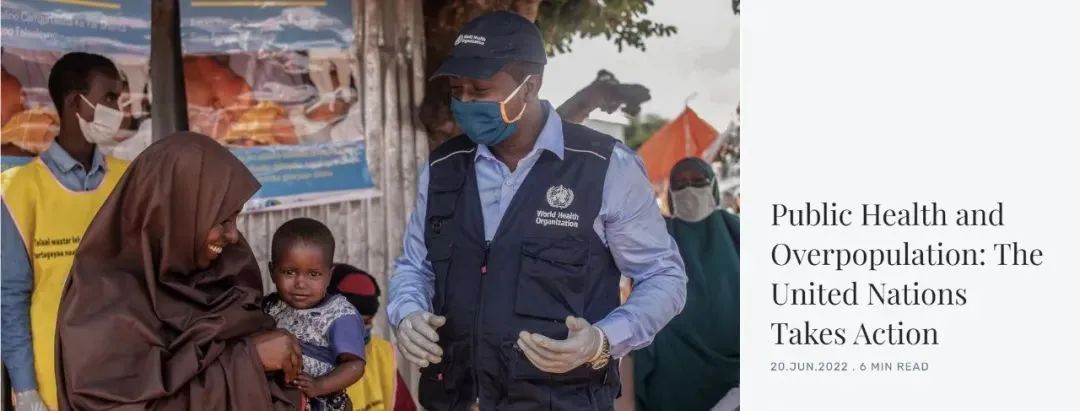
With the world’s population rising faster than ever before, will our population growth outpace our resource reserves? How can the dangerous effects of overpopulation be managed without diminishing the major improvements in our quality of life that come about thanks to population growth?
The UN projects that over half of the Earth’s population growth in the next three decades will occur in the continent of Africa. This is due to the fact that, from 2010 to 2015, Africa’s population grew at a rate of 2.55 percent annually, with the continent still maintaining the highest pace of population growth among other continents. The UN predicts that, behind Africa, Asia will be the second greatest donor to future international population growth, with an expected addition of approximately one billion people by 2050. In contrast, within every European nation, fertility rates are currently below the population replacement level, which is approximately two children per woman. In most of Europe, fertility rates have remained beneath replacement level for decades. The global population grew fourfold in the past 100 years, so what impact could increased population growth have in the future? Will there be mass-migration? Overcrowding in already densely populated or resource-rich areas? Poor living conditions and sanitation similar to Industrial Revolution era slums?
The global population is currently rising at a steady rate. The number of humans existing on Earth has never been as high as it is now. In 1800, Earth had approximately 1 billion inhabitants, which rose to 2.3 billion in 1940, then 3.7 billion in 1970, and approximately 7.5 billion today. In the last five decades, Earth has experienced an extreme population boom. This phenomenon is known as overpopulation, where the condition in which the amount of humans currently existing on Earth outstrips future resource availability and earth’s carrying capacity. Throughout human history, birth and death rates have always counterbalanced each other, which ensured that Earth had a maintainable population growth level. However, in the 1960s, the global population increased at an unparalleled rate. This brought about a variety of apocalyptic predictions, most prominently, a revival of the Malthusian trap panic.
Paul R. Ehrlich’s 1968 novel, The Population Bomb, eerily echoes Thomas R. Malthus’s landmark 1798 Essay on the Principle of Population. Ehrlich’s novel proposes theories regarding potential outcomes for when agricultural growth does not keep pace with population growth. Ultimately his theories say that the world’s food supply will inevitably become inadequate for feeding the general population, whose numbers would continue to swell until famine, disease epidemics, war, or other calamities took root. These Malthusian predictions about out-of-control population growth have resulted in a variety of detrimental global impacts, particularly the emergence of extreme reproductive control measures, which have taken center stage on an international scale. Today, despite the fact that population scientists mostly agree that Malthus’s forecasts were overblown, the lingering prevalence of these fears have contributed to millions of forced sterilizations in Mexico, Bolivia, Peru, Indonesia, Bangladesh and India, as well as China’s two-child policy. Overall, this has left many wondering whether extreme population growth projections are legitimate or merely groundless panic perpetuated by alarmists.
The Demographic Transition
In reality, rising birth rates and population booms are components of a four-step process called the demographic transition, which the Earth is currently undergoing. Most developed nations have already made this transition, but other countries are currently experiencing this change. In the 1700s, the entire world was undergoing the first stage of the demographic transition. During this time, the continent of Europe was in even poorer condition than the modern-day definition of a developing region, and was afflicted with inferior public health, sustenance, and medical facilities. Birth rates were higher; however, death rates were also higher. For this reason, population growth remained largely stagnant.
Statistically, in the 1700s, women birthed four to six children. However, on average, only two survived to adulthood. When the Industrial Revolution began in Great Britain in the mid-18th century, the Earth experienced the most significant shift in human lifestyles since the Agricultural Revolution. The Industrial Revolution altered every aspect of society, and fostered a greater sense of global interconnectedness. For example, many peasants became factory workers, manufactured products became widely available due to mass production, and countless scientific advancements improved existing methods of transportation, communication, and medicine.
Gradually, this economic development created a middle class and, after the work of union activists, ultimately raised the standard of living and health care for the impoverished labor demographic. Thus began the second transition stage. The increased availability of better foodstuffs, sanitation, and medicine directly contributed to lower death rates, causing a population explosion that doubled Great Britain’s population from 1750 to 1850. In the past, families tended to have more children because not all were expected to survive, but when child mortality rates decreased, the third transition stage was launched. This stage involves reduced conception rates and slowing population growth. Ultimately, a balance was established, with fewer deaths and births, creating a stable population growth rate and signifying the attainment of the fourth and final stage of the demographic transition.
Even as birth rates have decreased dramatically, Earth’s population is still rising at an alarming rate because the humans conceived during the population boom of the 1970s and 1980s are currently having more children; however, the current average number of children per family remains two and a half, while it was five during the late 1970s. As this generation ages and its fertility diminishes, the rate of population growth will likely continue to decrease in every nation. Most of the world’s countries have reached the fourth stage of the demographic transition. In approximately 80 years, developed countries will experience a reduction in fertility from over six children to fewer than three children. Malaysia and South Africa reached this point in 34 years, Bangladesh in 20 years, and Iran in 10 years. If developing countries are afforded more support, they will reach this point much faster.
Overall, most scientists postulate that human population growth will eventually come to an end, and the UN predicts that Earth’s population will not exceed twelve billion. Some of the major causes of population growth are reduced infant mortality rates, increased lifespans, higher fertility rates, advances in science and technology, and improved access to proper medical care. With the UN’s continued assistance, concurrent with overpopulation, the development level of the global community will increase, and the number of people living in poverty will decrease. Nonetheless, an ever-expanding human population is an immense social and economic challenge that necessitates the alignment of different national interests, especially with regards to reproductive rights, resource availability, and environmental concerns.
The United Nations Takes Action
In 1969, the United Nations Population Fund (UNFPA) was established in order to lead the UN in implementing population programs fundamentally based on the notion of family planning, or the “human right of individuals and couples to freely determine the size of their families” without governmental interference or legislation. In 1994, at the International Conference on Population and Development in Cairo, Egypt, the designated objectives of the UNFPA were determined in greater depth. It was decided that the UNFPA would specifically focus on the gender and human rights elements of population issues; consequently, the UN Population Fund was granted the lead role in aiding nations in fulfilling the Conference’s Programme of Action.
The three most significant sections of the UN Population Fund mandate are “Reproductive Health,” “Gender Equality,” and “Population and Development.” The United Nations Population Division (UNPD) works to confront the interconnected global issues posed by population growth, which is primarily fueled by rising fertility rates, increased longevity, and greater international migration. The UN produces the official demographic approximations and predictions for every country and all regions of the world. The UNFPA specifically addresses global population by compiling data and statistics regarding migration, fertility, marriage, regional development, urbanization, world population projections, and national population policies.
In November 2012, the UNFPA declared family planning a global human right; however, approximately 12 percent of 15 to 49-year-old women internationally are not afforded access to family planning. This is considered an egregious modern-day human rights infringement. The UNFPA aids various UN bodies like the Commission on Population and Development, and endorses the implementation of the Programme of Action undertaken by the International Conference on Population and Development (IPCD) in 1994. The UNFPA has been successful in urging international cooperation on the issue of securing family planning as a human right, pushing the UN to hold three conferences concerning the issue of population, along with two special sessions of the General Assembly and a summit in 2019.
The Way Forward
Ultimately, apocalyptic population growth fears are overblown, and as such, draconian population control regulations are unnecessary. We have witnessed progress on an international scale in this area, perhaps most notably with China revoking its infamous, longstanding one-child policy just seven years ago. However, a broader global focus on guaranteeing family planning as a human right remains essential. In the words of economist Julian Simon, “Whatever the rate of population growth is, historically it has been that the food supply increases at least as fast, if not faster.” Since Ehrlich’s initial fear-mongering regarding an overpopulation-induced Armageddon, the planet’s population has more than doubled. However, annually, famine deaths have dropped by millions. Today’s famines are war-induced, not caused by natural resource consumption. As production rose, prices fell and calorie consumption increased, which decreased malnutrition worldwide. In Simon’s words, human ingenuity is the “ultimate resource.” Therefore, the enactment of heavy-handed population-control regulations is not only abhorrent, but is also irrational and unsupported by scientific evidence.
链接:https://hir.harvard.edu/public-health-and-overpopulation/
除了这几篇范文,我们还从The Global Horizon发表平台,为大家搜罗了一些素材文章作为参考~帮助大家拓宽视野,增添对于国际社会的了解~
01The struggle against settler colonial affinities
Politics
International Relation
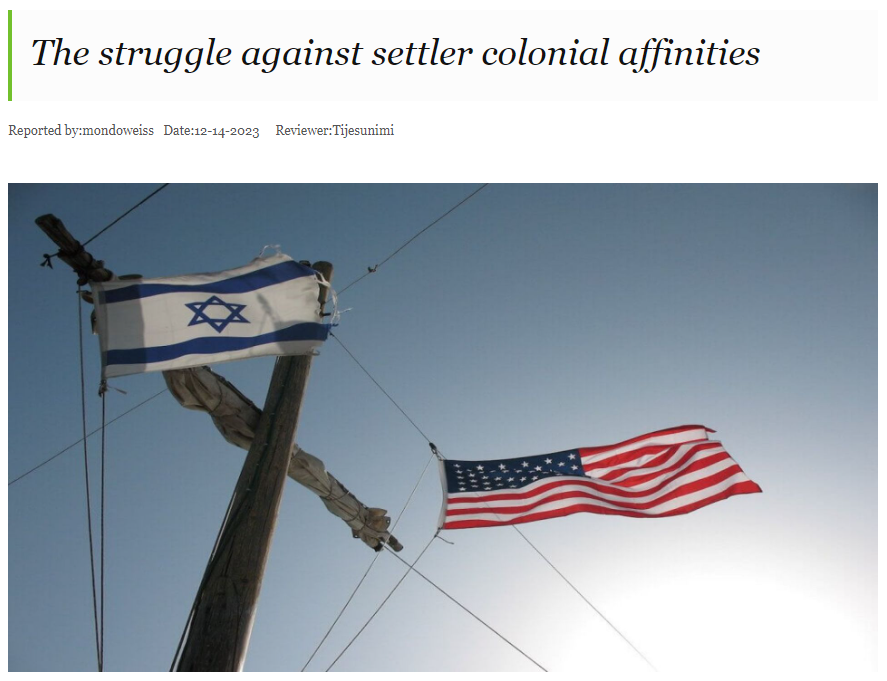
When presented with global news, or any political-related issues, it is imperative that readers must pause, reflect, and, at the bare minimum, research the information disseminated. Media literacy–the expanded conceptualization of literacy that requires deep analyses of the content and media messages provided–is lacking with the overwhelming instant gratification dehumanizing the narratives of the oppressed– all in a 6.06-inch standard rectangular dissociation machine.
Within the past weeks, coverage of the Israel-Palestine “conflict” have been circulating heavily through Western media, spreading false narratives to further misinform the public and encourage war crimes against the Palestinian people –or, in Israeli Minister Yoav Gallant’s words, “against human animals.”
Israel’s justification to the siege of Gaza is to capture Hamas and release Israeli hostages; however, the impact of constant carpet bombing on civilians and lack of resources controlled by Israel since October 7th, has been documented to be only affecting the most vulnerable–Palestinian civilians. Death tolls continue to rise as resources and aid are withheld from the people of Gaza and the West Bank.
Historical context is not provided in mainstream sources, framing these bombings and attacks as something occuring in a vacuum—dismissing seventy-five years of occupation and colonial violence pushed upon the Palestinian people, twisted into a narrative that serves the oppressors– consumed by Westerners who have not been taught the history of Nakba of 1948, the permanent displacement of Palestinians from their home.
The voices of Palestinians need to be emphasized now more than ever, as that has been their request throughout their resistance. It is important to note that the internet determines what is remembered and who is forgotten. To stand on the right side of history is to learn from the oppressed and stand alongside them as they fight for liberation.
Link: mondoweiss.net/2023/10/the-struggle-against-settler-colonial-affinities/
链接:https://www.theglobalhorizon.press/news/details/the-struggle-against-settler-colonial-affinities
02The Fed will do ‘whatever it takes’ to whip inflation. That might mean a recession.
Economics
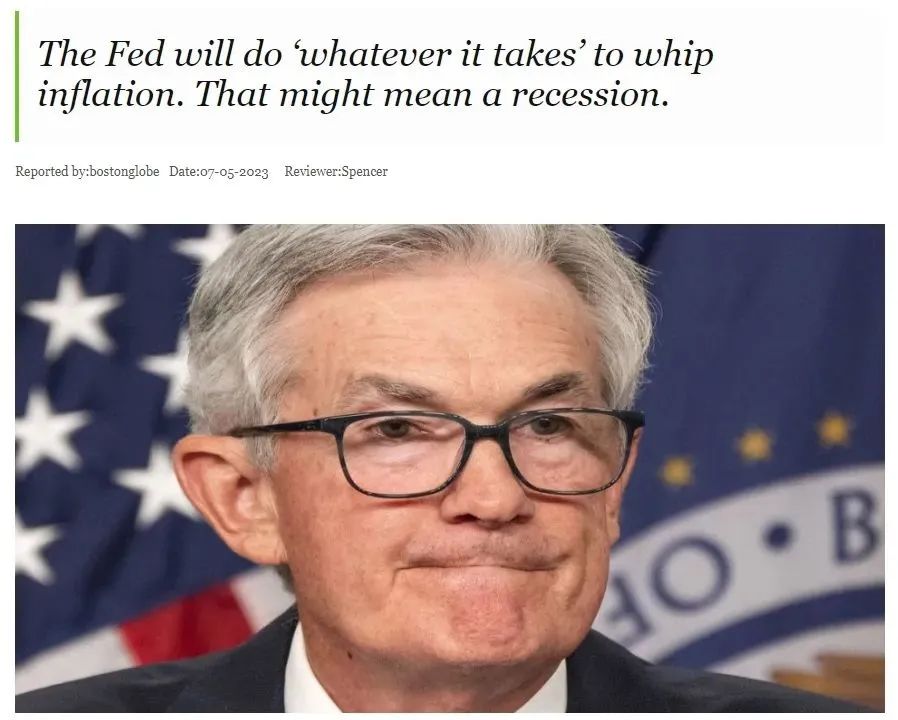
On Wednesday, June 28, Federal Reserve Chair Jerome Powell announced that Central Bank officials had met and unanimously agreed that their greatest priority was reducing the inflation rate to only 2%. Despite the Federal Reserve (Fed) not increasing interest rates in June, it is clear that future hikes are likely to be forecasted. Despite the negative effects on economic growth, the Federal Reserve has made it clear that curtailing inflation takes precedence over the well-being of the private sector in the United States. In Jerome Powell’s own words, “Reducing inflation is likely to require a period of below-trend growth and some softening of labor market conditions.”
Projections show that unemployment is expected to increase between 2023 and 2024, rising from 4.1% to 4.5% next year. However, other statistics are more positive. Since February of 2022, when inflation peaked at 5.4%, the Fed’s efforts have proven to be quite effective. In April of 2023, inflation was down to 4.7%. However, as Jerome Powell made obvious, there is still much work to be done if the Federal Reserve is to reach its eventual economic goals.
Link: www.bostonglobe.com/2023/06/16/business/fed-will-do-whatever-it-takes-whip-inflation-that-might-mean-recession/
链接:https://www.theglobalhorizon.press/news/details/the-fed-will-dowhatever-it-takesto-whip-inflationthat-might-mean-a-recession
03An Unlikely Source of Greenhouse-Gas Emissions
Technology
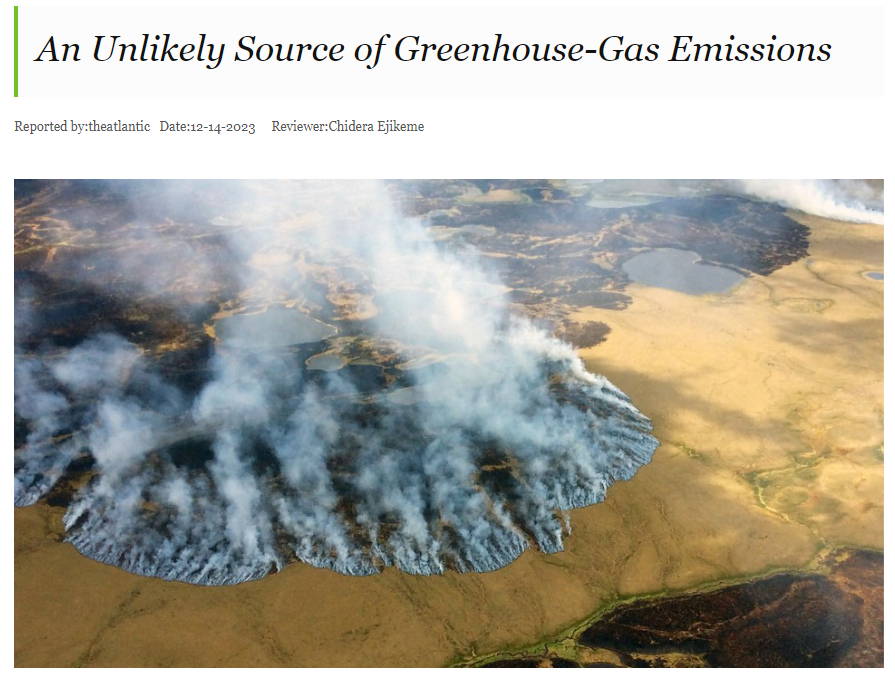
In Kylie Mohr's article, the focus is on the impact of wildfires on the Alaskan tundra, specifically their role in releasing methane, a potent greenhouse gas. The Arctic tundra, characterized by carbon-rich frozen soil or permafrost, has long served as a carbon sink, storing carbon for thousands of years. However, the insulation provided by a layer of plant litter, moss, and peat is crucial for maintaining permafrost integrity. When wildfires sweep through the tundra, incinerating this protective layer, the permafrost becomes vulnerable to thawing.
Research published in Environmental Research Letters reveals that methane hot spots in the tundra are more likely to occur in areas recently affected by wildfires. The study focused on Alaska's Yukon-Kuskokwim river delta, a region previously identified for substantial methane emissions. Using aerial surveys conducted in 2017, the researchers found that hot spots were almost 30% more likely in areas that had experienced wildfires in the past 50 years, rising to nearly 90% if the fire had touched water. Wetlands with carbon-rich soil in recently burned areas exhibited the highest ratio of hot spots. The findings, covering almost 700 square miles in Alaska, complement field measurements, offering valuable insights into the expansive tundra where on-the-ground research is limited. The study emphasizes the link between wildfires, methane emissions, and climate change, creating a feedback loop where wildfires release methane, contributing to climate change, which, in turn, leads to more frequent wildfires.
Tundra fires, though still relatively rare, could increase due to rising temperatures and heightened lightning activity. Projections indicate a potential quadrupling of wildfires in the Yukon-Kuskokwim Delta by the century's end. Given the vast amount of carbon stored beneath the Arctic soil, the consequences are significant, with Arctic permafrost serving as a colossal repository holding over 50 times the carbon released globally from fossil-fuel emissions in 2019. The transformation of portions of the tundra into a source of carbon and methane, instead of a sink, raises concerns about tipping points and underscores the urgency of addressing these episodic releases of greenhouse gasses for a more certain climate future.
Link: www.theatlantic.com/science/archive/2023/11/tundra-wildfires-methane-hotspots-climate/676042/
链接:https://www.theglobalhorizon.press/news/details/an-unlikely-source-of-greenhouse-gas-emissions
HIR哈佛国际评论赛
全球顶级社科学术期刊《哈佛国际评论》旗下,国际问题研究领域学术竞赛标杆。
HIR《哈佛国际评论》,成立于 1979 年,致力于通过出色的写作和编辑选择在学术和政策之间架起桥梁。曾收录了43 位总统和总理、4 位秘书长、4 位诺贝尔经济学奖获得者和 7 位诺贝尔和平奖获得者的专题评论。

HIR的主题始终围绕着人类命运共同体的相关话题展开,并且是自命题,可选择领域也是非常广泛~
不论我们是想要检验自己写作能力水平,或者是对时政话题感兴趣,有自己的观点想法想要表达,或者是看重哈佛背书这一背景,希望通过参赛借力,冲击顶尖名校,HIR都是一个非常不错的项目~
1适合学生
全球9-12年级高中生
2参赛时间
春季赛报名截止:2024年4月25日(中国学生)
春季赛提交截止:2024年5月31日
春季赛决赛答辩:2024年6月29日
3命题领域
HIR作为一个自命题学术论文,主题不需要出现在文章题目或内容中,只要选题角度和写作内容能够反映竞赛主题理念即可。
命题方向包含但不局限于:农业、商业、网络安全、国防、教育、就业&移民、能源&环境、金融&经济、公共卫生、科技、太空、贸易、交通运输等13个领域。
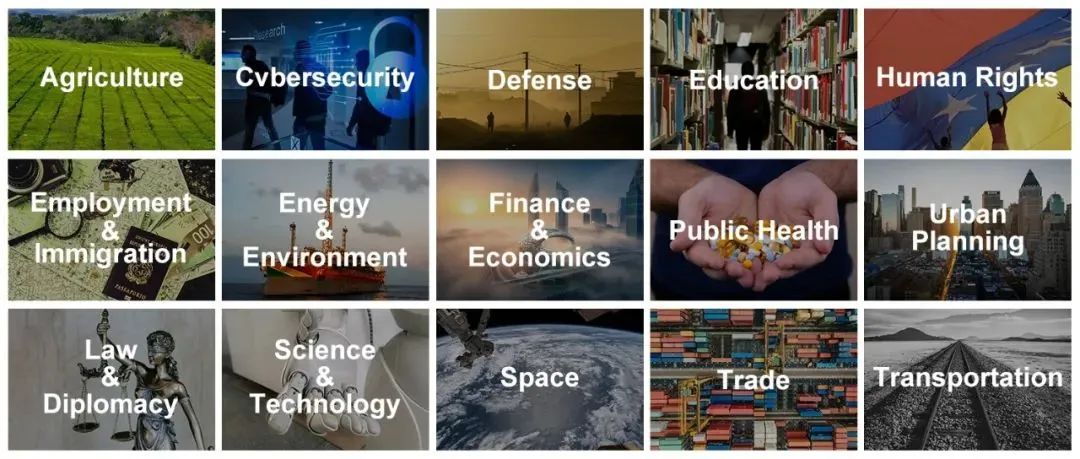
4竞赛要求
▪ 字数限制:字数800-1200(不包括图表、数据表或作者声明)
▪ 内容议题:提交的内容应针对某个不被关注的全球性主题,提出自己的观点并进行充分的分析论证。
▪ 写作风格:优秀的参赛作品需要具备全面性、批判性,遵循事实情况,进行合理地论证与分析。
1. 标注对书籍和文献的引用
2.文章必须是AP风格
▪ 答辩环节:
公布入围名单后,入围参赛者即为决赛入围者,需要在答辩日,向评委会进行 15 分钟的演讲和口头答辩。
▪ 注意事项:
● 注意赛事时间线与时差
务必注意赛方时间是基于美东时间,各个节点日期当天的11:59 P.M. (EST)。同学们做赛事规划务必考虑到时差,避免错过时机哦~
● 赛事设有答辩环节
在公布入围名单后,入围同学则自动进入“决赛圈”,需要筹备完成15分钟左右的答辩,突围冲奖!同学们需要有所准备哦!
5奖项设置
大 奖
金、银、铜奖
以及各类单项奖
Commendation Prize
Outstanding Writing Content / Style Prize
High Commendation Prize
关于HIR,想要有更针对性的赛事规划,
扫描上文二维码咨询吧!










